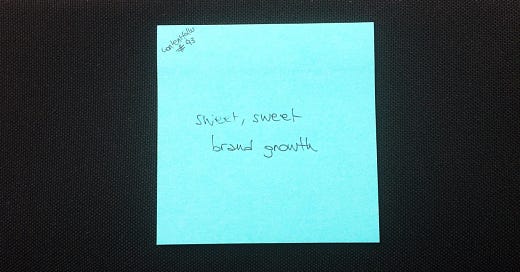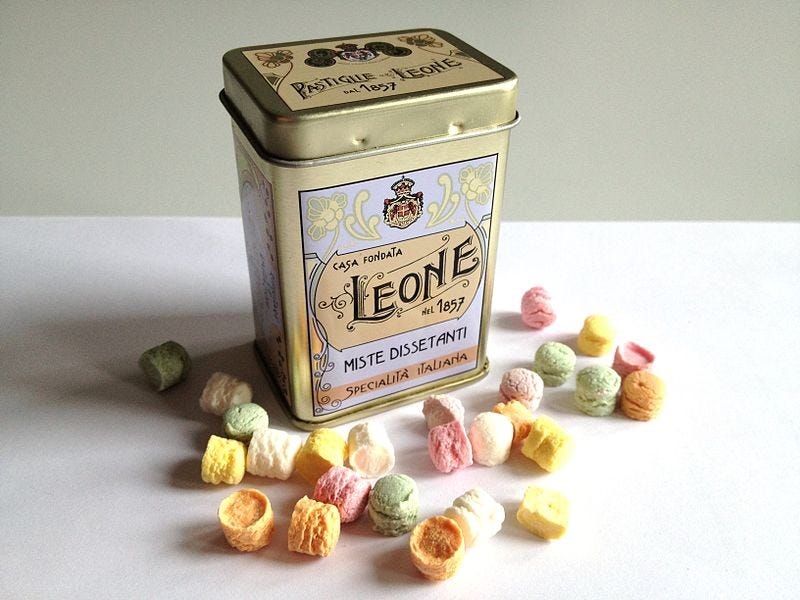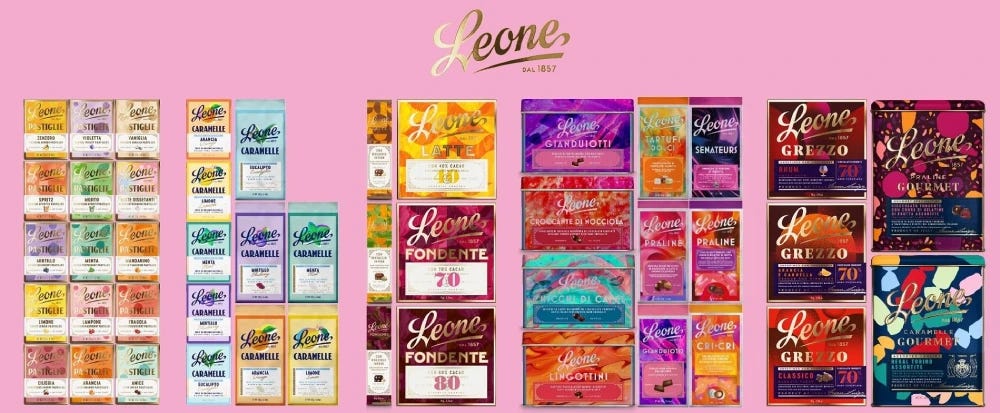cf #93: sweet, sweet brand growth
You are reading contentfolks—a monthly(ish) blend of sticky notes, big content ideas, and small practical examples. Thank you for being here! ~fio
Hey there 👋
Today, we take a little detour away from ‘just’ content to examine the bigger picture of brand marketing—and we do it in style, with a handful of candy to sweeten the journey.
Known to you ≠ known to the market
Growing up in a small and remote corner of Italy, years before this sound gave me a larger window on the world, I made a bunch of assumptions about how life operated beyond my little bubble.
For example, I assumed that Leone—a candy brand established in 1857 that I’d often see in local cafés and occasionally my nonna’s cupboard—was as known to the rest of the country as it was to me.
When I later moved to a different region, I realised instead that Leone was virtually unknown 150km from my hometown. Nobody had heard about it. For years, I couldn’t find it anywhere. It probably took until the 2010s for Leone to be even semi-reliably available across a few major Italian cities.
As per it being available abroad, it wasn’t. Over the last decade, I’ve used my trips back to Italy to stock up on little tins and candy packets that always, reliably, looked and tasted the same:
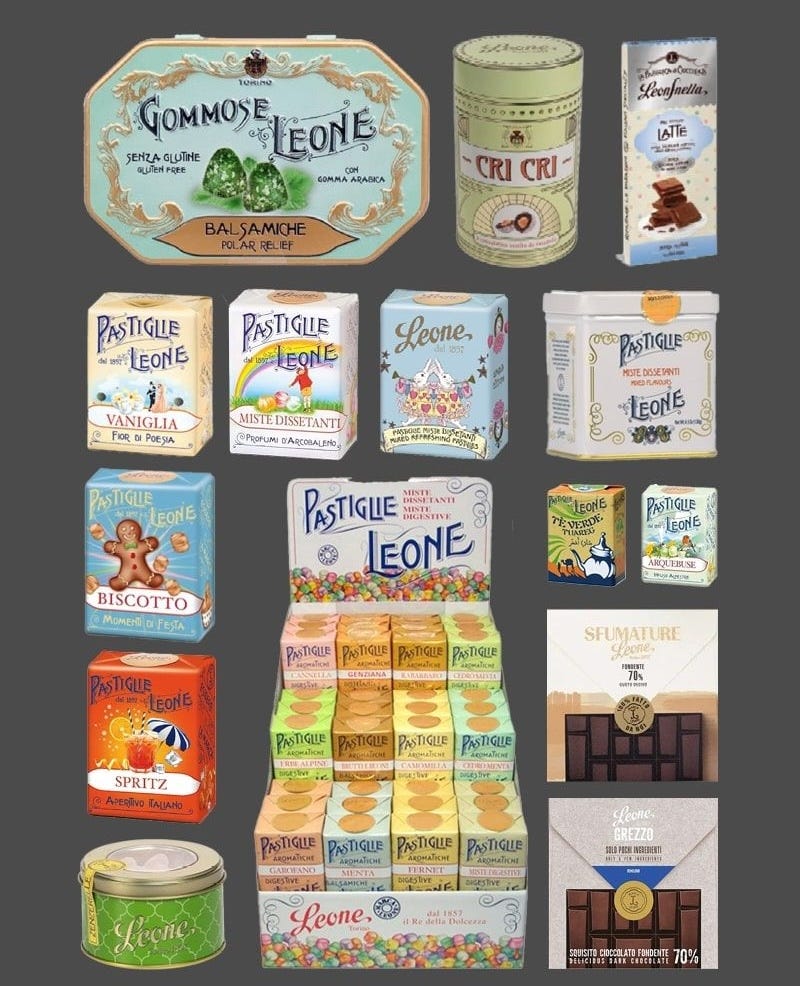
Leone is a brand with a recognisable look, a strong focus on craft, deep affection among repeat customers, and a relatively small market footprint. We may be talking about candy, but we’re not miles away from the state of many B2B SaaS companies today: solid products, deep expertise, a few champions, and limited awareness beyond their immediate circles.
What marketing science says about growth
There are a few marketing laws, backed by decades of empirical evidence, that more marketers (myself included) would benefit from knowing.1 The most relevant one for today’s issue is the law of market penetration, which states that brands grow by increasing the number of buyers, not by increasing loyalty. As in: growth doesn’t come from going deeper with a few, but from becoming known, available, and considered by the many—especially the ones who have never heard of the brand and are not currently in market for it.
That’s the approach Leone has taken recently, after a private acquisition by the Barilla Group (you may be familiar with them as the multi-billion dollar Italian pasta manufacturer; we’ll get back to them in a minute). In just a few years, Leone has gone from the nostalgic, nichely distributed candy I grew up with to a modern brand with international ambitions; in 2023 alone, its turnover grew +10% YoY to 12M euro, 30% of which came from foreign markets.
Here are some of the steps they took to get there:
1. A major brand refresh
Leone updated its brand promise by declaring itself ‘la fabbrica della felicità,’ the happiness factory. It then unified the quaint but scattered visual system, tightened its typography and colour palette, and refocused on just a handful of distinctive assets, including a slightly re-worked version of the heritage wordmark.
More details from Design Bridge (the team behind the refresh) here, if you enjoy that kind of stuff. I certainly did!
2. A focus on increasing audience exposure
Exactly one year ago, Leone ran its first ever national TV campaign, followed by ads on local TV, radio, and streaming platforms + influencer partnerships + outdoors, print, and in-store advertising, with the explicit goal of reaching a much wider audience than ever before.
I was in Italy at the time, and I cannot convey how wildly surreal it felt to see this ad on my mom’s TV for the first time. Me → 🤯
3. Building (more) physical availability
Leone launched its ecommerce site in 2023. In 2024, it experimented with opening two pop-up stores in China.
Once again, I cannot convey how wildly surreal it feels to know that this brand, which I once could not find anywhere outside a 150km radius, is now available on the other side of the planet and many more places in between.
…but how do I know all of this?
First, give me some credit, I am a major brand marketing geek 😉 second, last week I got a guided tour of the Leone HQ—and yes: that included a lot of free candy.
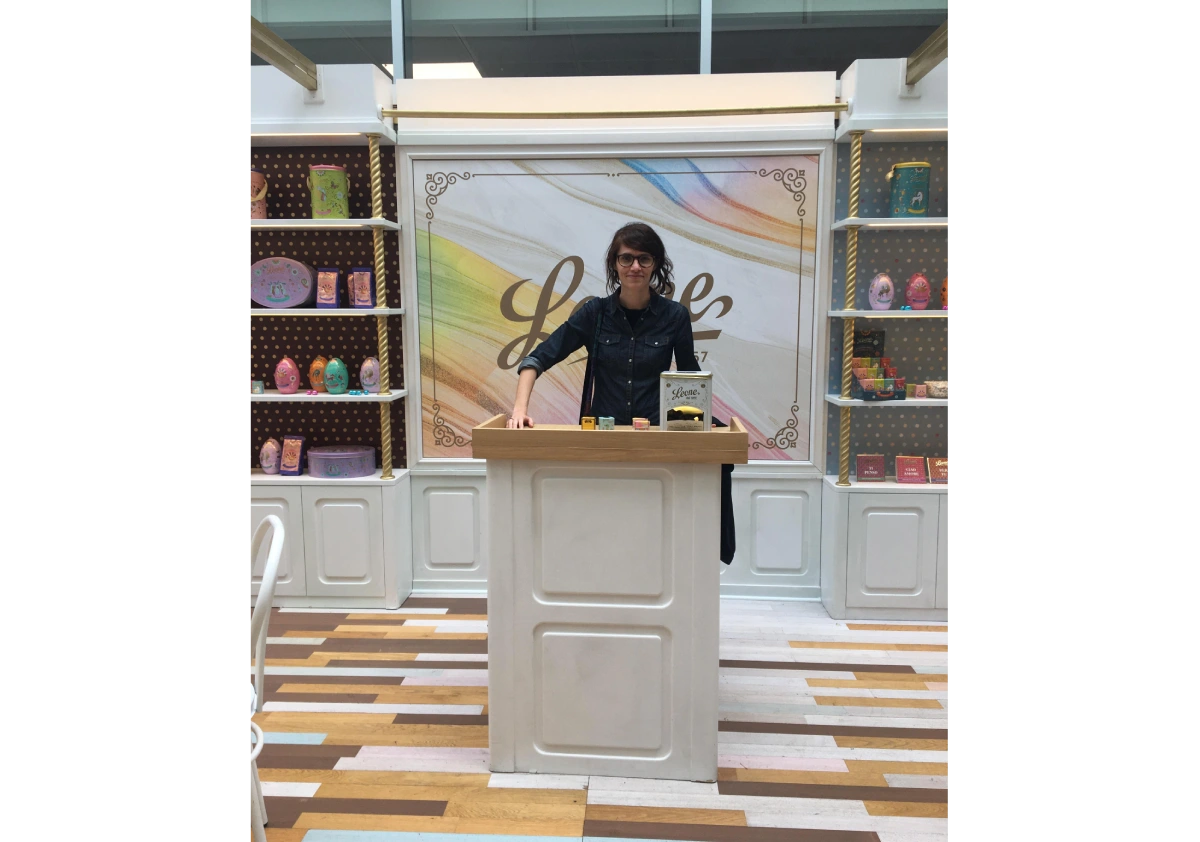
Brand building isn’t free—but ignoring it costs you more, later
Leone’s is an exceptional growth story, but some or even most of it may not have happened without the Barilla acquisition, which added strategic capital, operational expertise, and a vastly expanded distribution network.
In fact, Leone demonstrates an often inconvenient marketing truth: brand building works, but it costs money. At the HQ last week, the Leone spokesperson summed it up as follows: “se vuoi crescere, devi investire.” If you want growth, you must invest in it.
Most of us working in B2B SaaS don’t have Barilla money, and may never be able to replicate the steps Leone took.2 But we sure can take the key principles it followed—grow by being easier to remember, find, and choose—and apply them with whatever resources we have.
These are all good starting points:
Make our brand look and sound like it belongs in its category; even better: make sure it stands out in it
Codify and repeat our distinctive assets (logo, tagline, palettes, visuals) everywhere
Show up consistently, even in small ways, across the channels our future customers already use
Invest time in understanding category entry points (the moments when future buyers start looking) and shape our content around them
Our job as content and brand folks is to make it easier for future buyers to become aware we exist → recognise us later → mentally associate us with the problem we solve → eventually think of us when the right moment comes. Whether it’s premium candy or resource management software, that’s what great marketing is ultimately about.
I came to marketing as a hands-on practitioner, and it wasn’t until 7+ years into this whole thing that I started taking the discipline seriously, investigating its laws, and reading its foundational texts. For example: most of this issue is based on How Brands Grow by Byron Sharp which, I’ll be honest, is a dense book that I struggled to finish at least three times in the last five years—but wow, did it make me realise my knowledge gaps were VAST.
…though let it be known that if the leadership team at Float ever wants to shoot an art deco-inspired commercial about resource management software, I’m in.

